Angkor Wat is the largest religious monument in the world, surrounded by over 1,000 other temples and ruins. On our original itinerary, we would have 4 days to explore this incredible place. To our revised schedule we had less than 2. But at this point, it was a privilege to be able to see it at all.
Having booked the last available flight home, paranoia became part of our daily routine as we tried to remain uninfected for our final two days. It started when we ordered lunch before flying to Siem Reap: was our food prep hygienic? Was our cutlery clean? Were the tables far enough apart? Then, on the plane itself, wearing our face masks barely felt an adequate precaution against the army of elderly Brits surrounding us.
Pre Rup
We arrived into Siem Reap on Friday afternoon and with not a moment to spare, booked a sunset tour of Prasat Pre Rup. Sunset ended up being clouded over, though this was still a great first impression of this jungle full of temples.
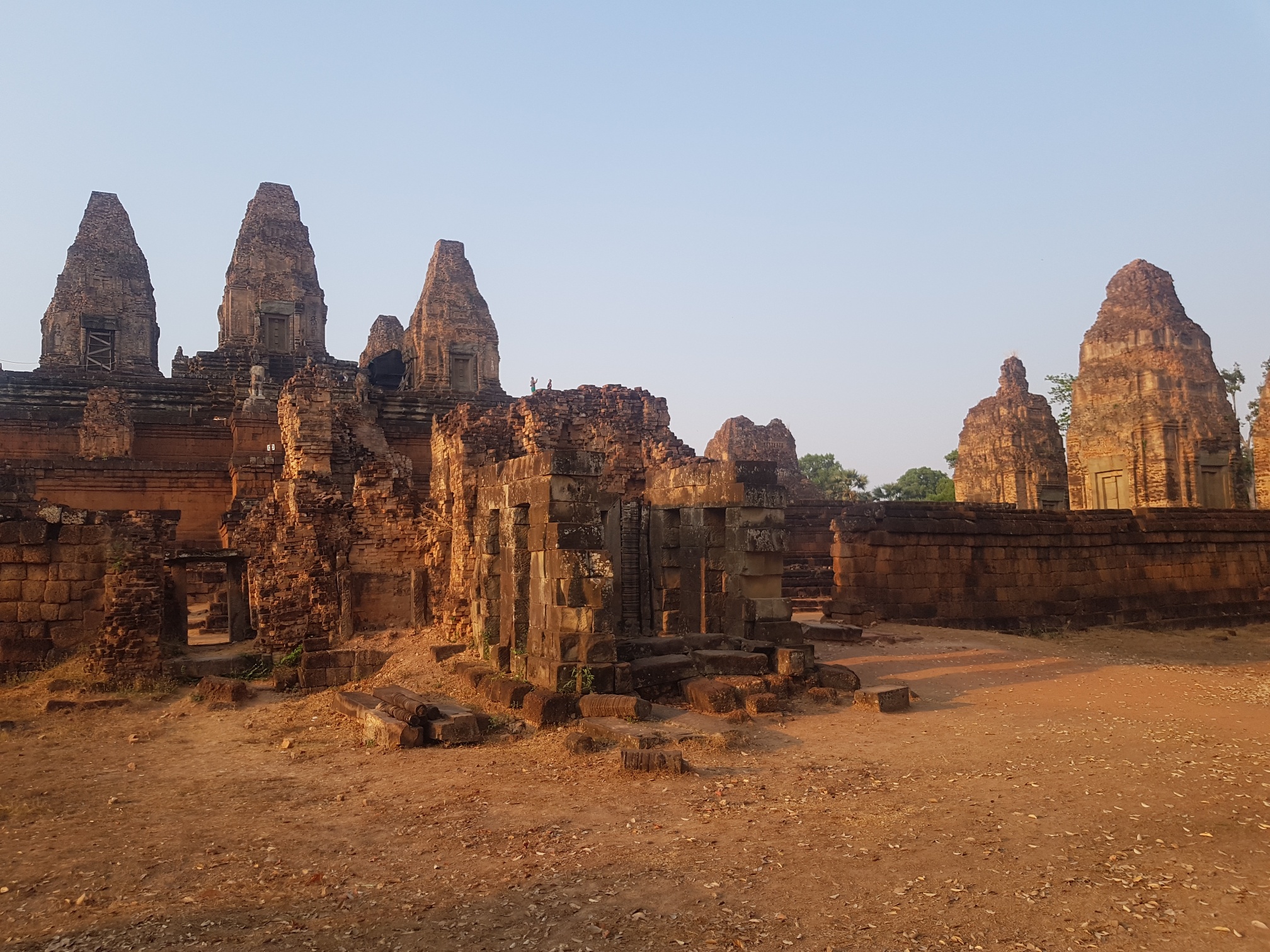
Angkor Wat – Sunrise
Continuing with our express tourism, we booked a full day tour for Saturday, beginning with sunrise at Angkor Wat itself.

Angkor Wat (“City / Capital of Temples”) was originally constructed early in the 12th century, during the 37 year reign of Suryavarman II. The name Angkor Wat is used interchangeably to refer to both the main temple, and the entire archaeological park which surrounds. Of the many temples at the site, Angkor Wat is the best preserved and even features on Cambodia’s flag.
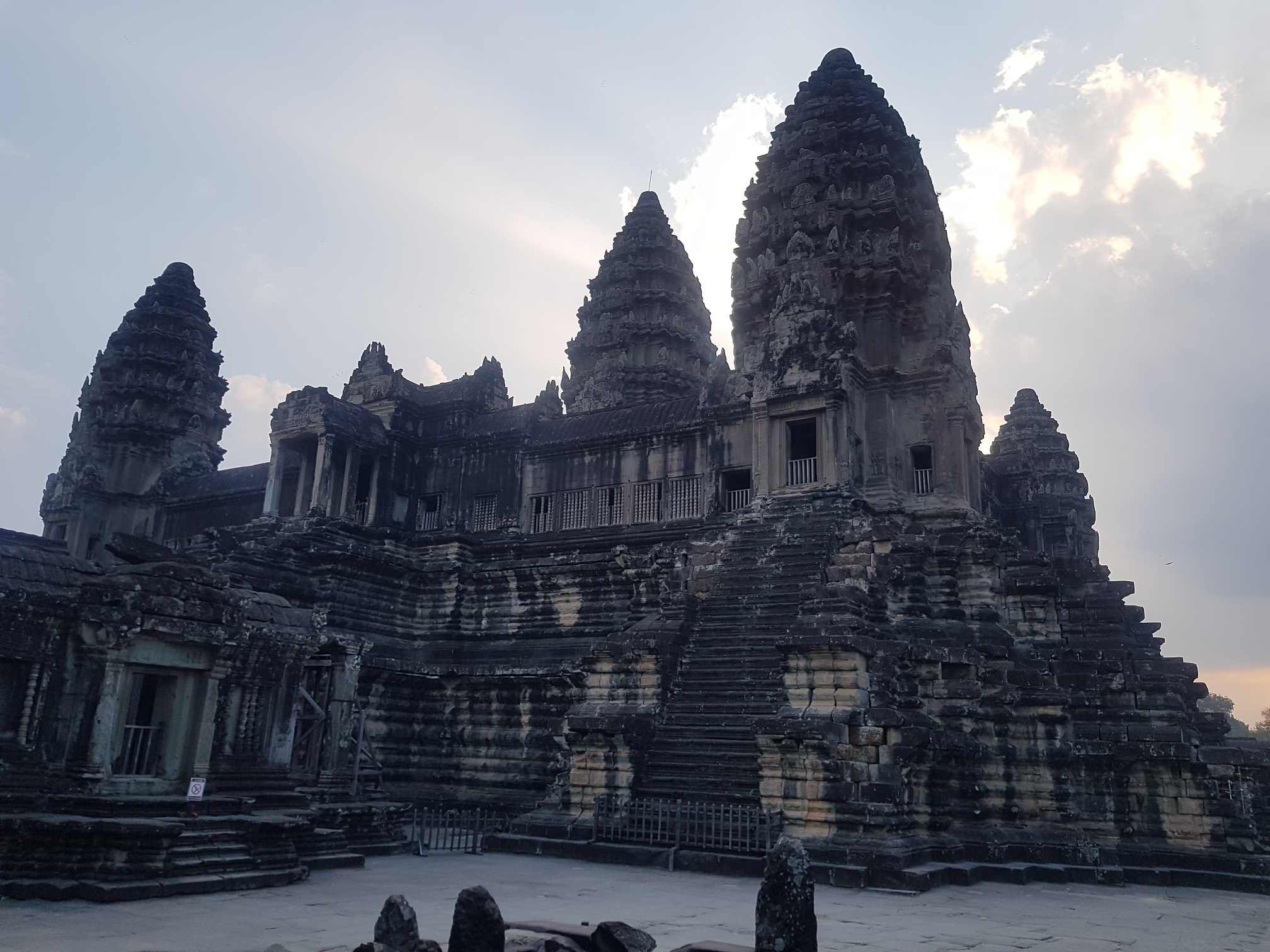
Angkor Thom
Our next stop was Angkor Thom (“Great City”), which was built shortly after Angkor Wat. On our way we passed over a moat bridge lined with headless statues. During the Cambodian civil war, many heads were stolen from relics within Angkor Wat. However, some are gradually being returned as the broken relics are believed to have brought bad fortune to the families of those that took them.

Bayon
Angkor Thom is home to a number of temples, the first of which on our agenda was Bayon.

Bayon is notable for having 216 enormous faces engraved into its numerous towers. The faces are thought to be that of King Jayavarman VII who ordered its construction.

Baphuon
Next to Bayon is Baphuon, another imposing structure. Though structural damage means it is no longer as tall as it used to be, the steep climb to the top still rewarded us with a great view.
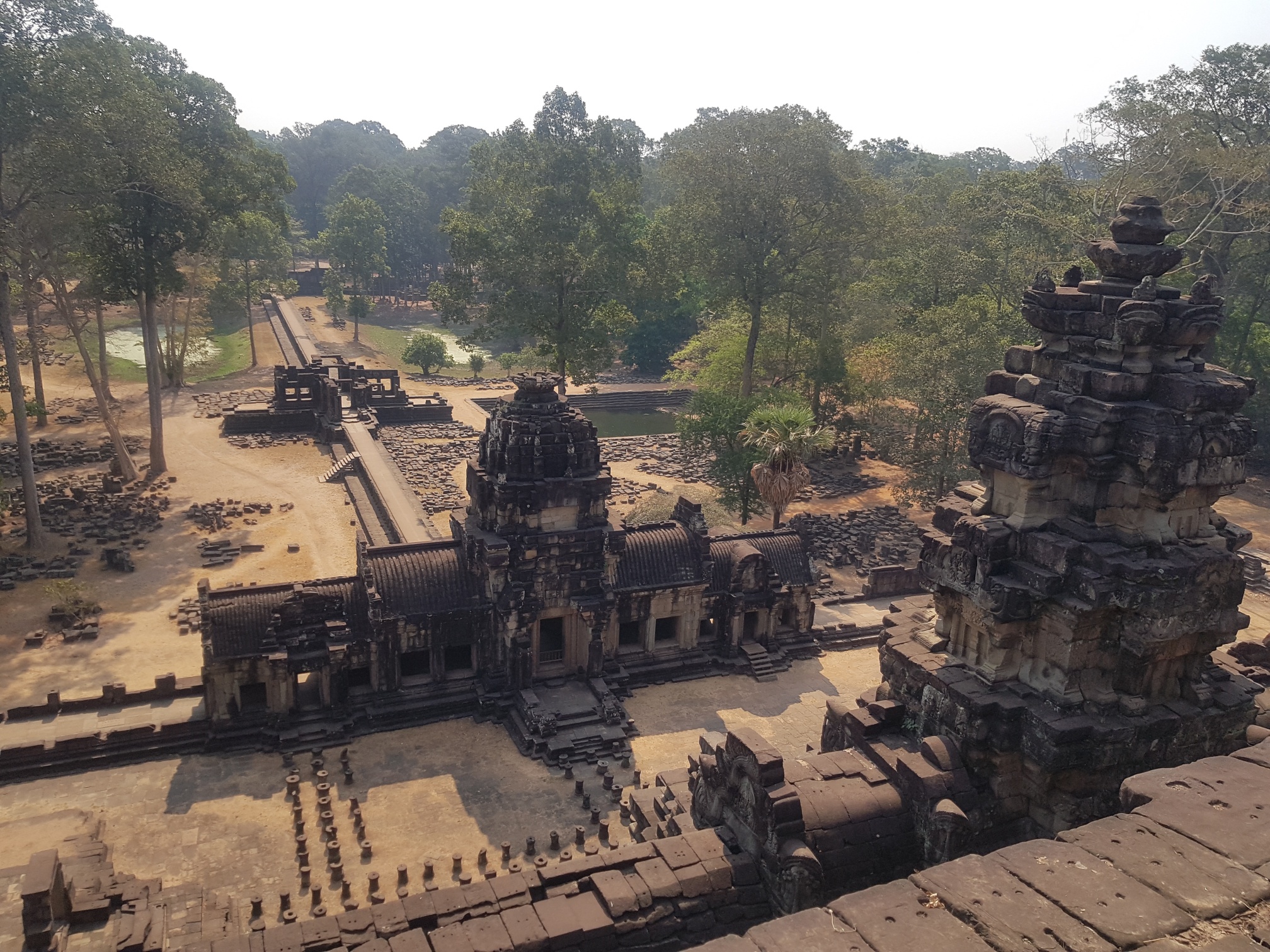
The majority of the Angkor Wat’s temples are inherently fragile due to being built on sandy land, causing the foundations to be reliant on groundwater. Recent years have seen significant conservation efforts to restore damaged temples. However, as tourism ramps up and more illegal water pumps are installed to keep the grounds of 5 star hotels green, the long term stability of these structures appears to be at risk. So one good thing to come out of coronavirus is that with tourist numbers at a record low, many hotels are now closed and less water is being used.

Unlike Bayon there was very little shade on Baphuon making it an extremely hot climb to the top. We were grateful to be met back at the base by our driver bearing cold water for us to drink.

Ta Prohm – Tomb Raider Temple
One of the most recognisable temples in the region, Ta Prohm, wasn’t far away. If you’ve ever seen Tomb Raider (we haven’t actually), this is seemingly the temple where it was filmed.

We could see why this temple was famous as it offered a stunning fusion between the natural and the man made.
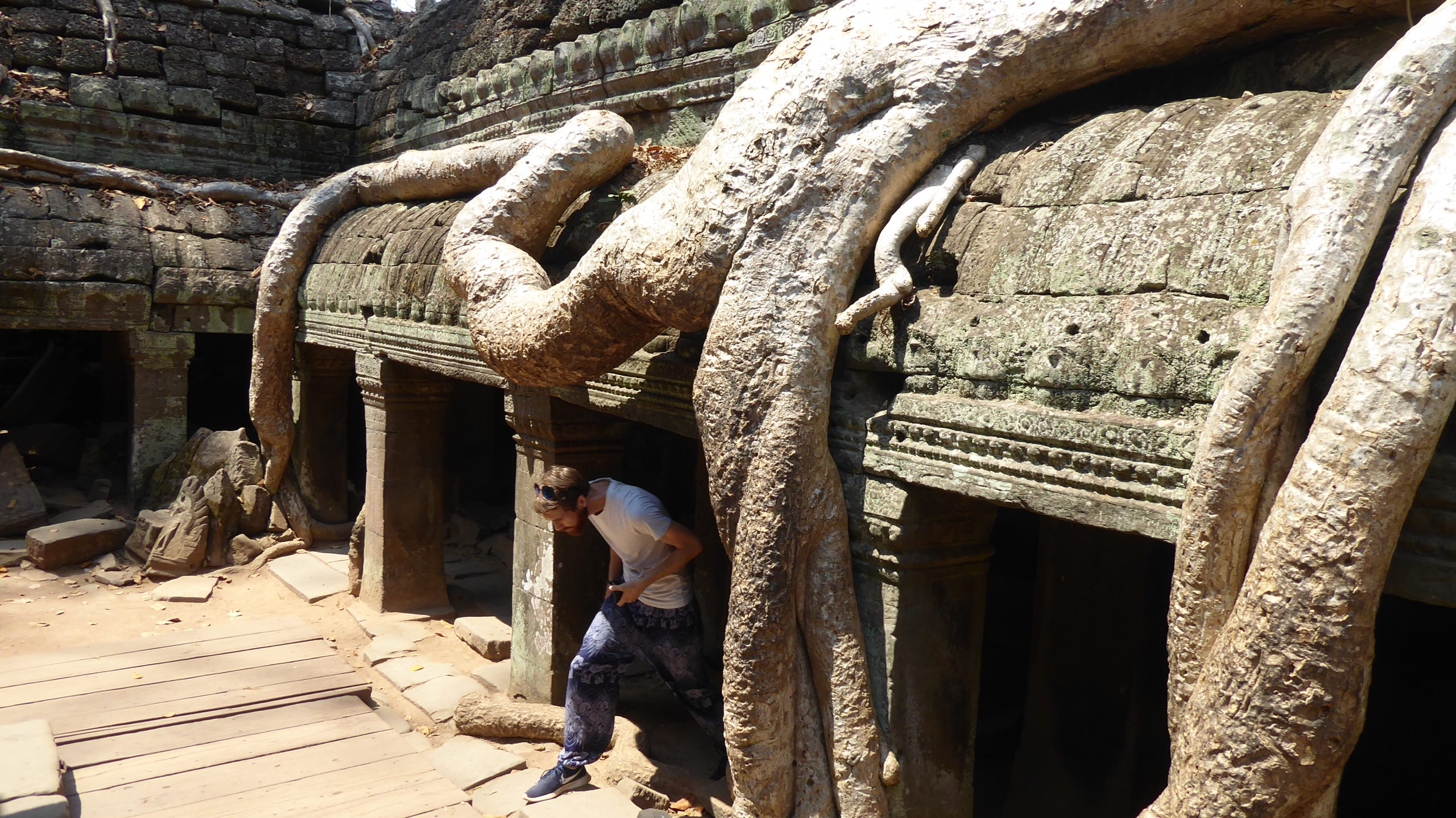
Many of the temples at Angkor Wat were slowly being overcome by nature in this way, but none quite so distinctly as Ta Prohm. This unique look made it our favourite temple we had visited so far.

Eastern Mebon
Since leaving Angkor Wat that morning, we had only encountered maybe 10-20 tourists between the other temples. This made photography a breeze and even with our rushed itinerary, we were really able to enjoy our time and fully appreciate the architecture.
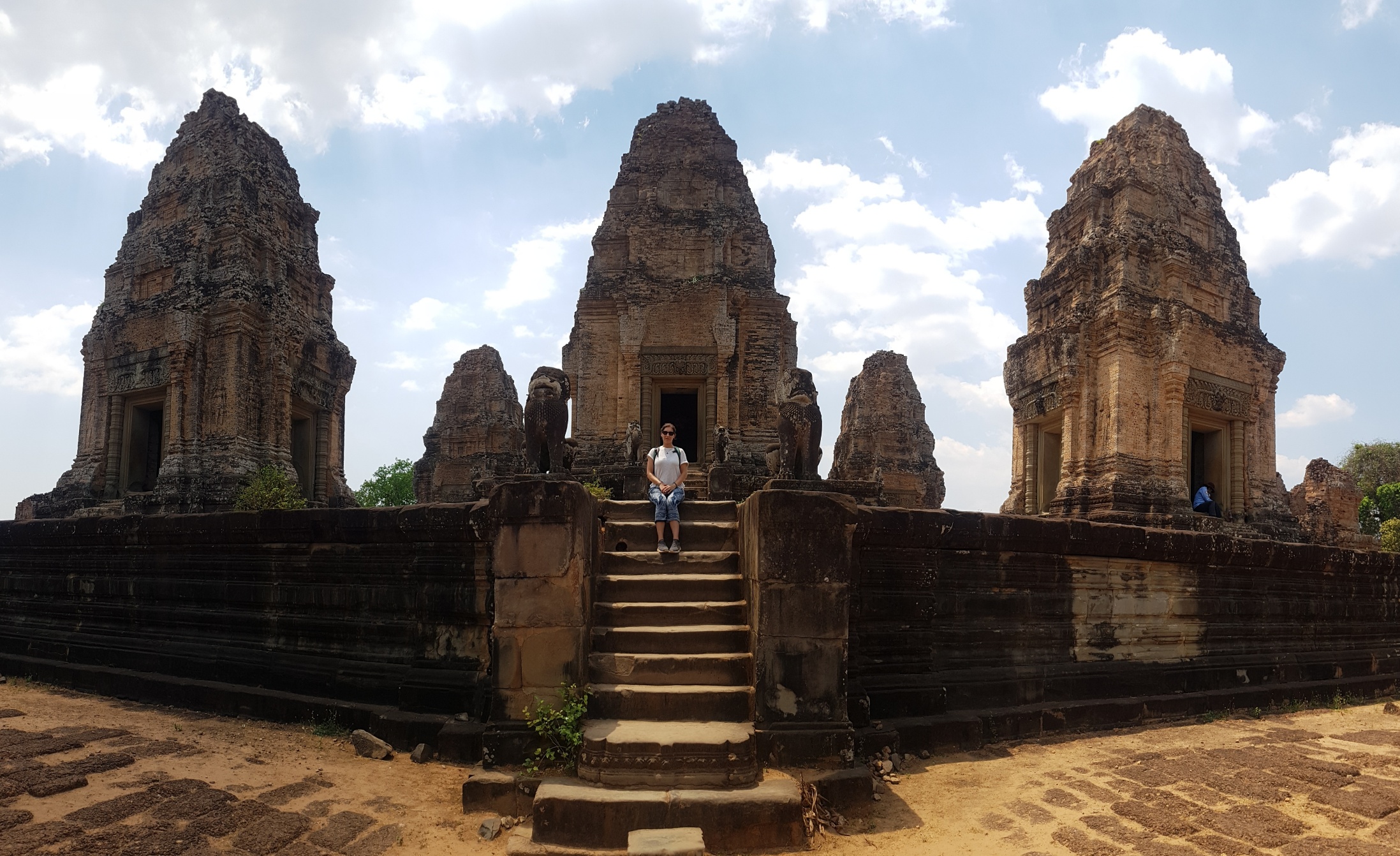
Ta Som
Nearby, Ta Som felt like a smaller version of Ta Prohm but was still beautiful in its own right. This might just be our favourite photo spot in all of Angkor Wat.

Preah Khan
Our final temple of the day was Preah Khan. Though not as tall as many of the other temples, it was spread across 140 acres of land making it quite large.
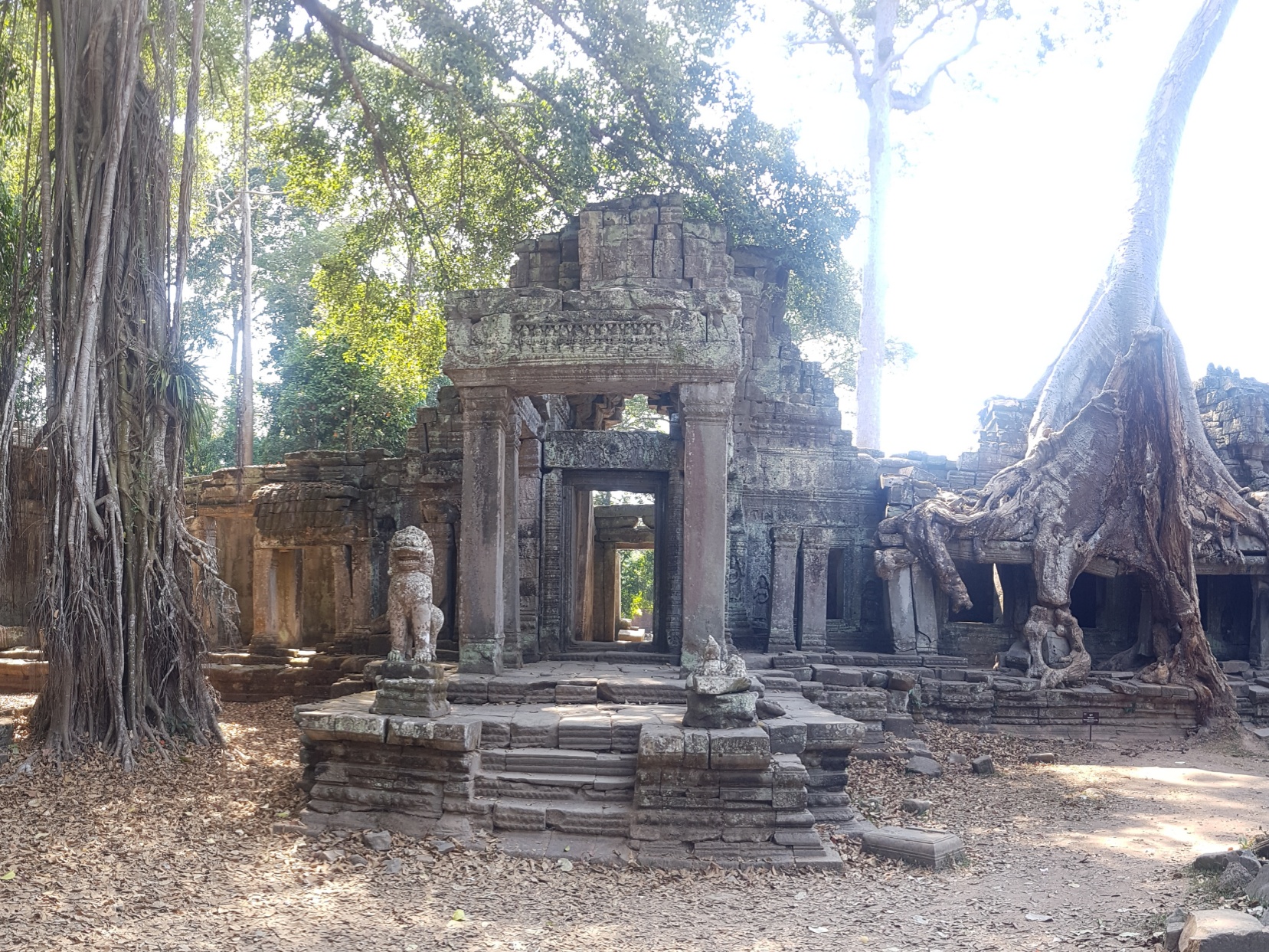
This one has not been restored much beyond removal of vegetation, but the intricate carvings on the walls were fascinating. According to translations of these carvings, this temple complex actually once served as a city with over 100,000 residents.

There were still many temples we had not seen, but having been on the go for over 10 hours already we decided to call it a day after Preah Khan. We didn’t get to see much of Siem Reap, but it looked like a nice enough city.

Banteay Kdei
With our flight home not due to leave until evening, we were able to spend Sunday morning visiting some of the temples we missed on Saturday.
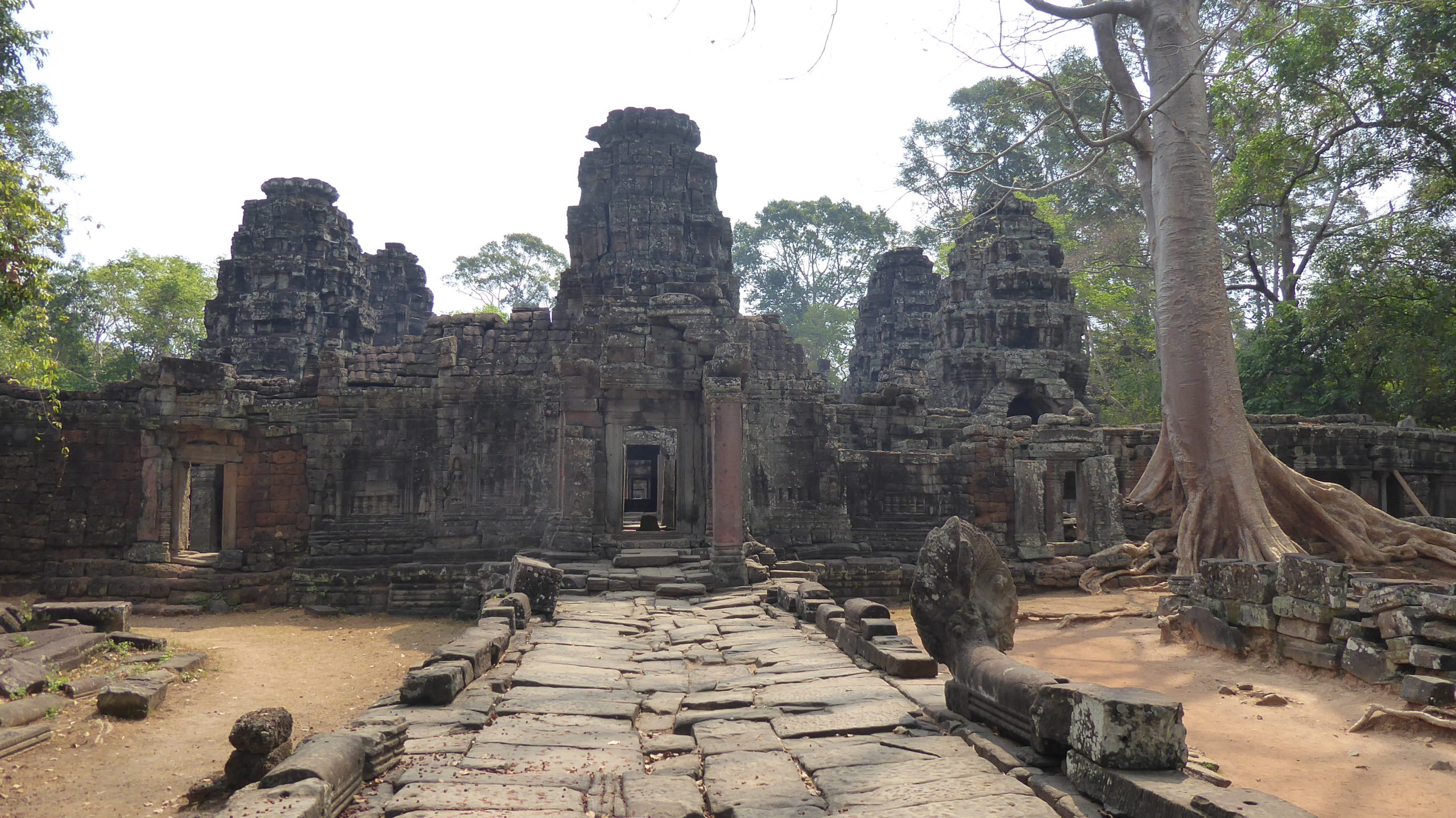
Banteay Kdei was one such temple which, in our haste, we had skipped. Apparently this temple remained occupied by monks for much of its history, even as recently as the 20th century. Needless to say visiting on a Sunday morning was incredibly peaceful.
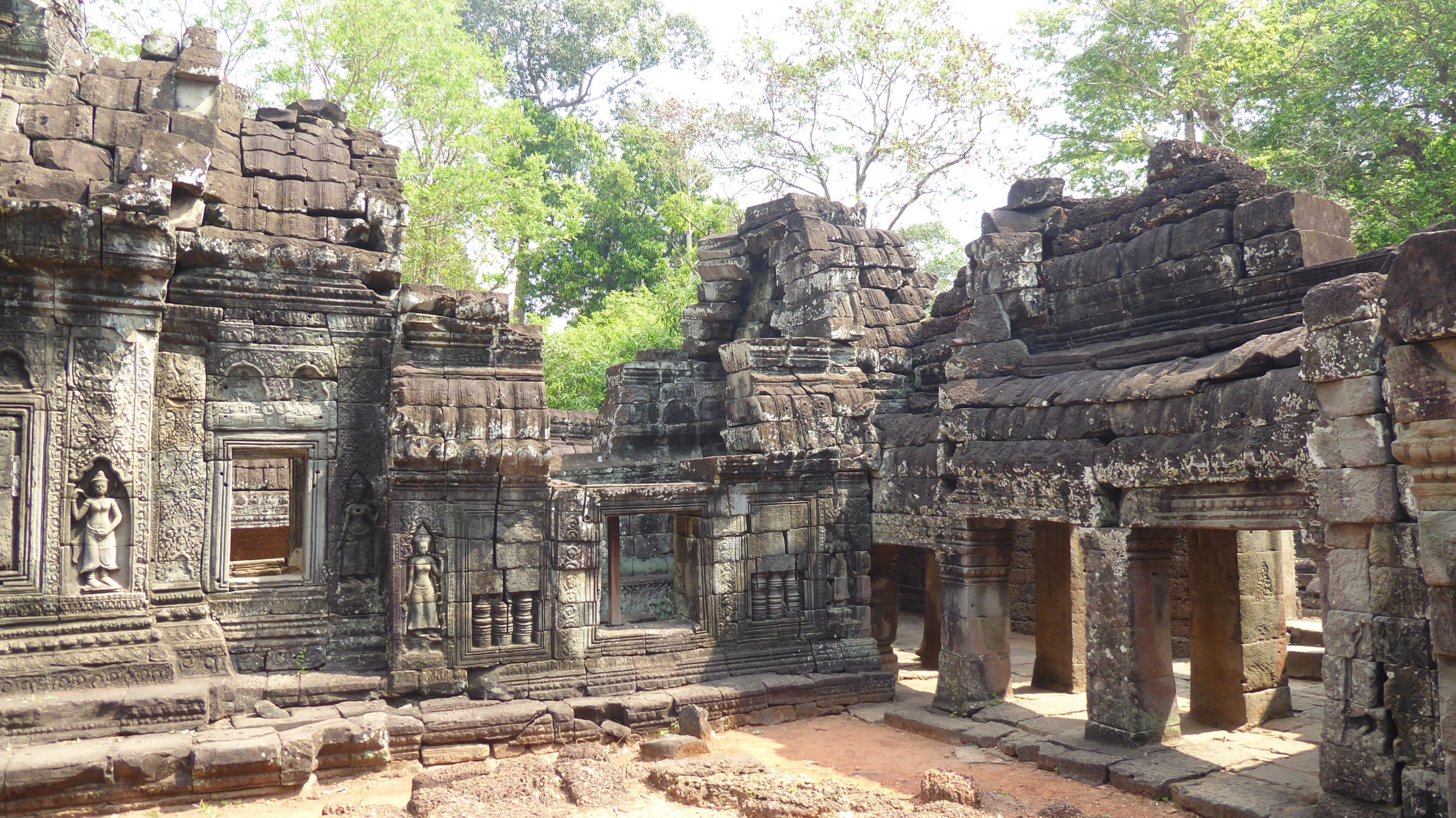
Chao Say Tevoda
With our final couple of hours we wanted to revisit Angkor Wat. On the way there though, our driver took us by a couple of other notable temples we had missed. Firstly was Chao Say Tevoda, a small but picturesque temple.

Ta Keo
The 10th century Ta Keo temple became our penultimate stop. Despite being grand in appearance, apparently its construction was never completed. This is possibly due to the death of the king at the time, although some speculate that it was abandoned after ominously being struck by lightening (per one of the inscriptions).
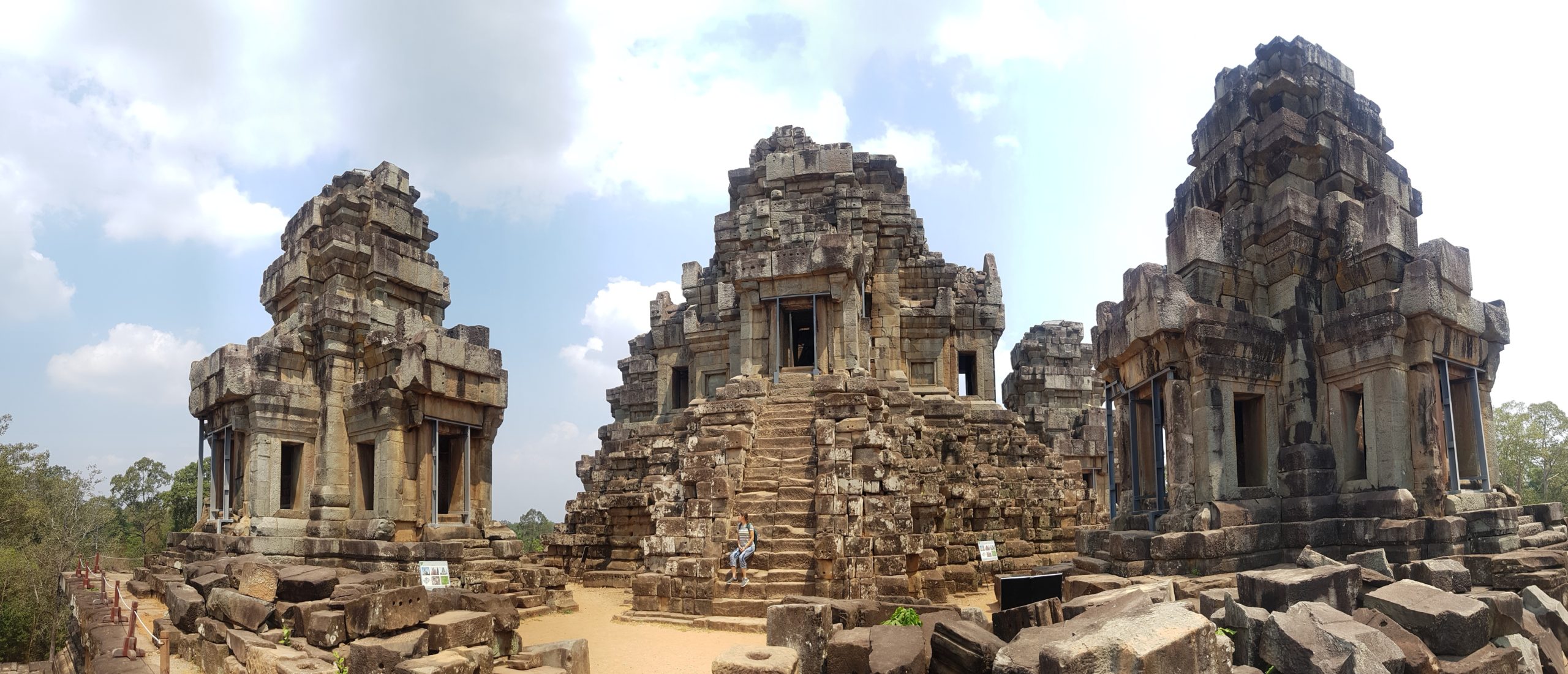
Angkor Wat – Daytime
Finally, we returned to Angkor Wat to see it one last time, in full daylight. The previous morning when we went for sunrise it had been relatively busy, but it was almost completely deserted this time around.

Inside the temple, we saw maybe half a dozen other visitors in total, no more. Being the biggest tourist attraction in the country, this emptiness truly gave Angkor Wat an apocalyptic atmosphere.
This was a spectacular sight to end our career break on. Getting home was nerve wracking to say the least, but we’ll cover the journey in a separate post.

